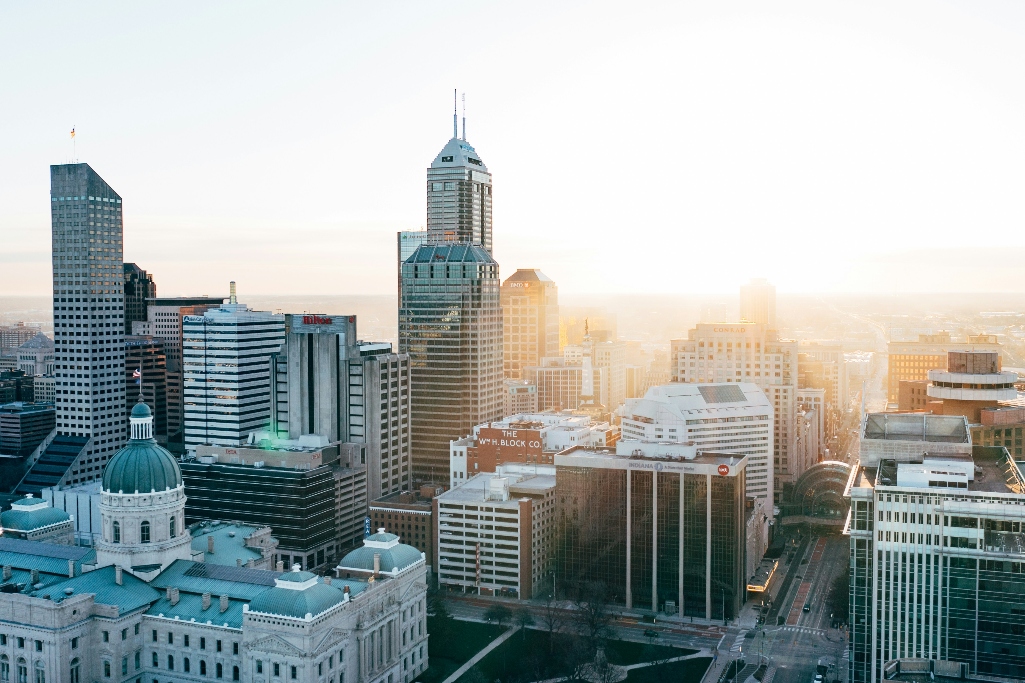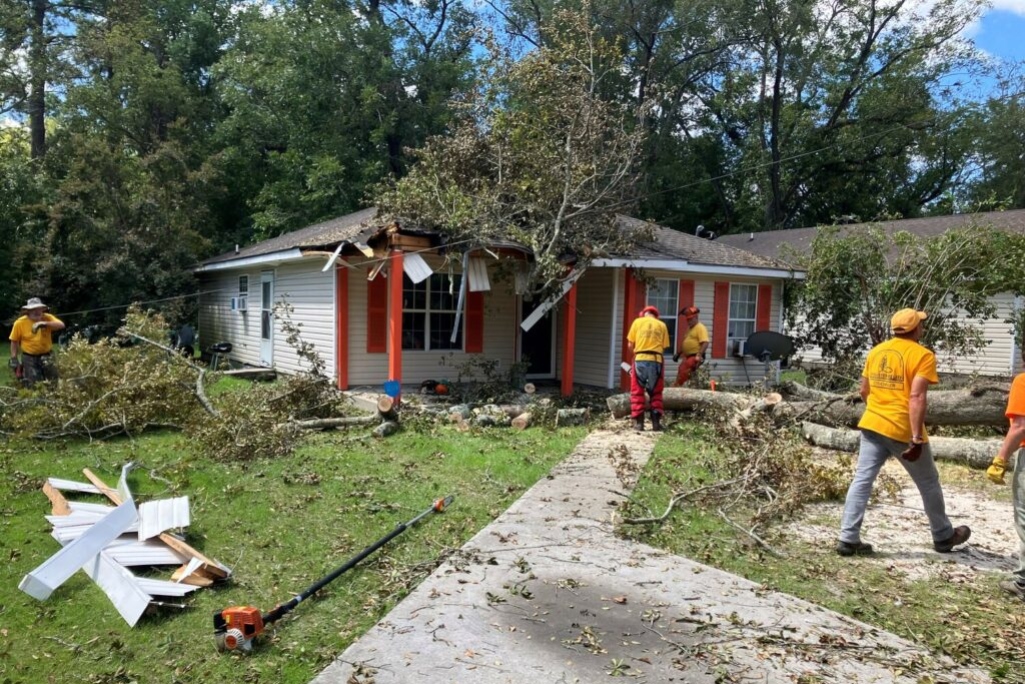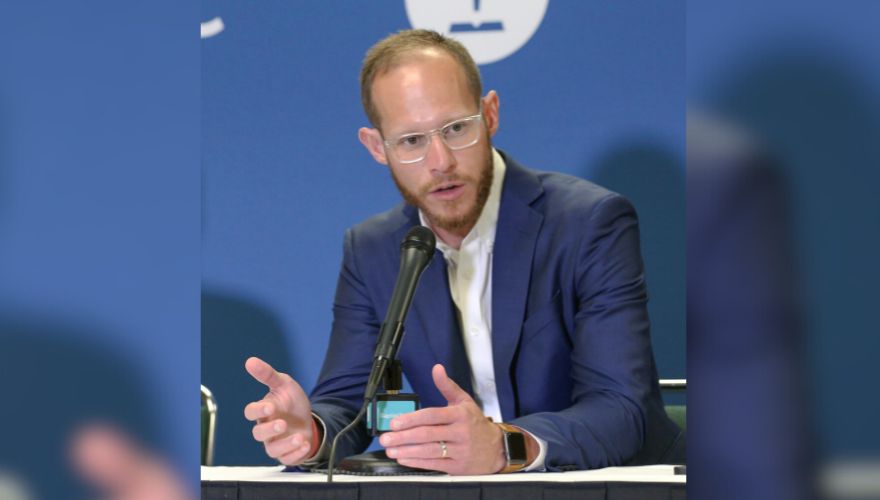
INDIANAPOLIS (BP) — He was one of the most talented, skilled and educated church planters Association Mission Strategist (AMS) Chris Kellermeyer had ever met. But the young man is no longer in pastoral ministry, not in Indianapolis nor anywhere.
“He had a great plan coming in, did a lot of research on where he was going to plant,” Kellermeyer said, recalling a conversation before the church planter hung up shop. “He said, ‘You know Chris, with all the effort, time, money that we have spent here,’ he said ‘if I would have done this in Texas, we would have been a megachurch by now. … But we’re struggling.’”
The planter gave up planting for an administrative job in Christian education, Kellermeyer said.
Messengers to the 2024 Southern Baptist Convention (SBC) annual meeting in June and volunteers for the Crossover evangelistic surge will find themselves in a downtown Indianapolis with no Baptist church within walking distance.
Living Faith Church, about two miles away from the Indianapolis Convention Center, is the only downtown church among the 90 that cooperate with the Crossroads Baptist Association where Kellermeyer serves.
The Wesleyan Church, the Christian Church and the Free Methodist Church are all headquartered in Indianapolis. In the suburb of Plainfield sits the Islamic Society of North America, the largest Muslim organization in the nation.
There’s even the First Church of Cannabis, a group that meets on Wednesdays but is not able to include marijuana in its rites — as its namesake suggests — because marijuana is illegal in Indiana.
Disciples of Christ, Catholic, Presbyterian and non-denominational churches color the downtown landscape in the city that Kellermeyer describes as “a little bit post-gospel.”
“Most people, as you would encounter them, don’t understand what the gospel is,” Kellermeyer said. “We don’t have a long history of generational Christianity here. There’s a strong sense of duty and doing the right thing. We’re salt-of-the-earth folks, but the passion you would experience in our Southern tier for our churches is just not there.”
But once they embrace the church, they’re typically all in, Kellermeyer said.
Roger Kinion, an area pastor leading the Crossover outreach June 8, centers the outreach in surrounding communities to include more Southern Baptist congregations. Living Faith will participate, as will the Metro Baptist Center, a Southern Baptist benevolent gospel outreach that offers the gospel along with temporal necessities.
Kinion also describes the locals as friendly but senses there’s no felt need for the gospel, which he suggests could be a nationwide phenomenon. Concurrently, he encounters no outward opposition to the gospel.
“They’re just not interested in church life,” Kinion said. “To strike up a spiritual conversation is not that difficult. To turn it to Jesus-specific or salvation or a need to be plugged into a Bible-teaching, Bible-preaching church — you lose them there.”
Kinion has found an embracing family in his pastorate, Calvary Baptist Church in Greenfield, about 15 miles outside the Indy Loop, a term referencing Interstate 465 or USS Indianapolis Memorial Highway encircling Indy.
Calvary Greenfield is among dozens of churches participating in Crossover, with some sites hosting multiple outreaches.
Kinion pastors a community which migrated from Kentucky when the coal production decreased in the 1960s, he said, and brought with them their church roots.
Averaging 130-140 in weekly attendance, Kinion’s is one of the larger Southern Baptist congregations in Indiana, which has 430 congregations statewide to serve a population of about 6.8 million. Comparatively, Tennessee, with a population of 7 million, has more than 3,000 Southern Baptist churches.
Kinion is praying for revival.
“My hope is that we see a spark of revival,” Kinion said, “that we would see the entire region of central Indiana changed by the gospel. And I would love to see that happen during Crossover as we see fires lit in people’s hearts and as they come to churches and bring friends to churches and begin to see a community change.”
Statewide, Indiana has a large rural landscape that results in two-thirds of the state’s churches being lumped into three of the state’s 14 associations, said Scooter Kellum, team leader for church and leader mobilization with the State Convention of Baptists in Indiana (SCBI.)
The remainder of the churches, about 150, are spread among 11 associations in the state, which the Purdue Extension Center for Rural Development describes as 44% rural and 35% rural/urban mixed. Only a fifth of the state is decidedly urban, the center said.
The large rural landscape is a major distinction that makes church planting in Indiana different than other states, Keller said.
“We still need more churches in Indianapolis. It is a great place to church-plant,” Keller said. “We’re trying to figure out how to reach the rural areas around our state, but then we’ve still got our pocket of Indianapolis.”
About a quarter of the 90 churches in the Crossroads Association serving Indy were planted in the last five years, according to the association, and Keller would like to see comparable success statewide.
Keller is excited the state is hosting the annual meeting.
“I think that we as a state have an opportunity to serve our churches in a way that helps Southern Baptists move forward in partnership with the gospel,” he said, “in a way that other states might not have the opportunity to.”
He cites the SBCI’s revitalized staff, new vision and new partners focused on spreading the gospel. He himself has been in his post 20 months, and Executive Director Ryan Strother was hired in late 2021.
“As we reengage our churches,” Keller said, “they’re seeing where we’re headed, not where we’ve been all the time.”
(EDITOR’S NOTE — Diana Chandler is Baptist Press’ senior writer.)


